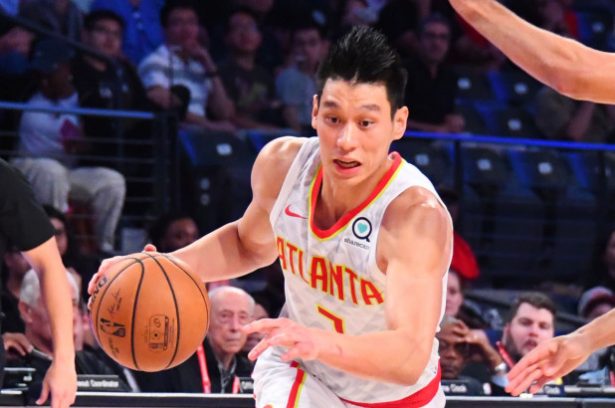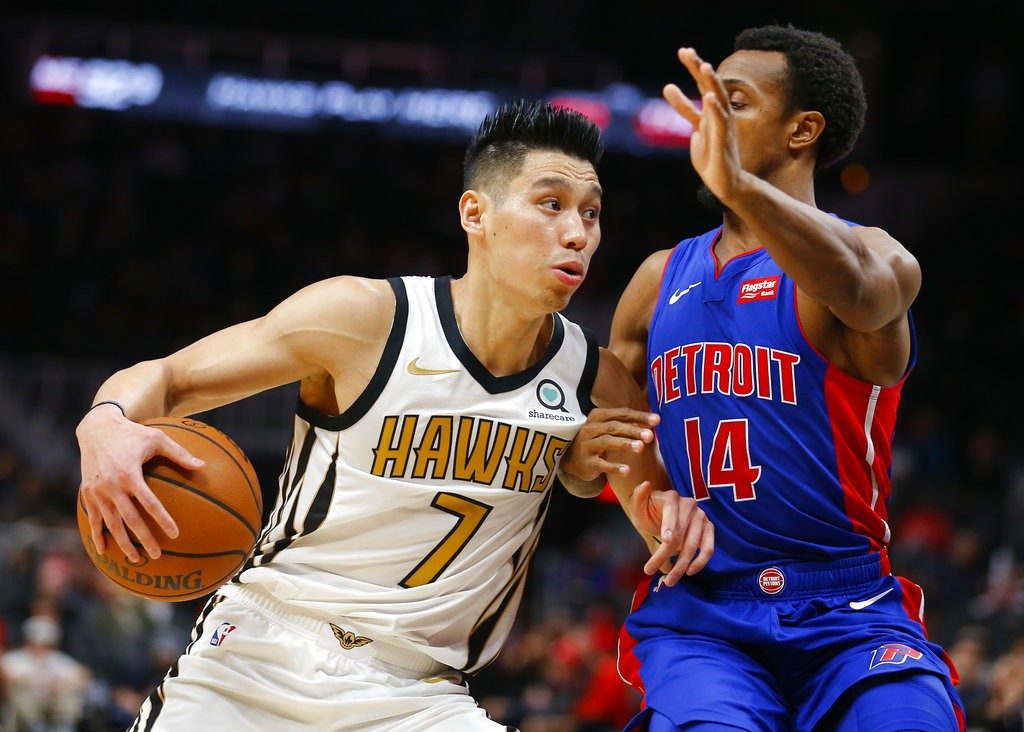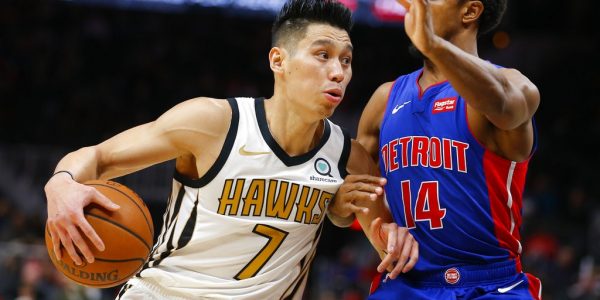17 games into his 2018-2019 campaign with the Atlanta Hawks, Jeremy Lin has found himself a neat little rhythm – rather short, impressively productive stints off the bench, unfortunately coinciding with his team’s losing streaks, but good enough to probably put Lin on the radar of a number of teams with bigger aspirations and a need for help in the backcourt.

Yes, the 30-year old is coming off a disappointing 2-year stretch with the Brooklyn Nets. He played well when he was healthy (especially near the end of the season) in year 1, and missed all of year 2 except for the first minutes on opening night. But after an expected sluggish start to his time with the Hawks after getting traded by the Nets, Lin has shown more often than not just how much basketball he has left, and how much we and especially his former team missed out on while he was injured.
So Lin’s numbers this season so far: 10.1 points per game, 2.8 assists and 0.8 steals in 17.7 minutes a night. He’s making 46.6% of his shots, 37.8% from beyond the arc and 86.5% from the line. Shooting-wise, this is the best season of his career. His eFG% (53.8) and TS% (61.0) are the best they’ve ever been for him. And while his plus/minus per 100 possessions is -10.7, that’s because the Hawks are bad team. A better number to consider is his team’s +1.2 net rating when Lin is on the floor compared to when he’s on the bench.
His per minute numbers compared to other backup and less-played guards in the league speaks volumes for his value and necessity for teams that need quick scoring, smart playmaking and versatile shooting.
Among guards averaging between 16 and 25 minutes a night and have played at least 12 games this season, Lin is 5th in points per minute with 20.6 per 36 minutes, behind only Jordan Clarkson, Antonio Blakeney, Trey Burke and Quinn Cook. When it comes to shooting efficiency, Cook is the only one doing better than Lin, while Lin leads the 5-some in assists and steals per minute (he’s also turning the ball over a lot more, 4.1 per 36 minutes, most among guards in that criteria).

But Lin is doing all of his efficient scoring with a lot less shooting; the fewest field goal attempts among the top 9 scorers in the link highlighted above with just 14.1 per 36 minutes. He’s also doing a fantastic job of getting to the line, with 6.2 attempts per 36 minutes, knocking ’em down at an impressive ratio. He leads all other backup guards in this category as well.
Bottom line – Even without more minutes (although he’ll probably start playing more and more around the 24-25 and sometimes more), Lin is quickly establishing his place in the league again. While it’s not as the borderline All-Star and starting point guard he could have been (and rightly or not, it’s probably not going to happen anymore), Lin is one of the best and most productive bench players in the league.
In short, as the Hawks hover close to the worst record in the NBA, it’s becoming more and more evident that it makes more and more sense to trade Lin and his expiring deal. Not right now, but closer to the deadline, when the pressures of playoffs and title run expectations demand teams an upgrade in the form of Lin.
